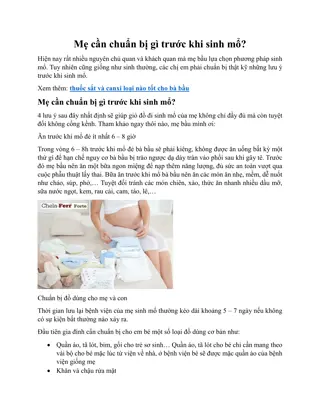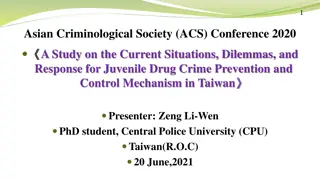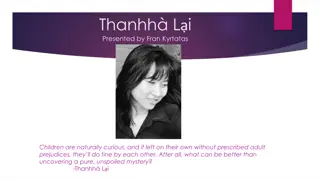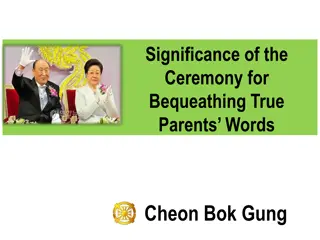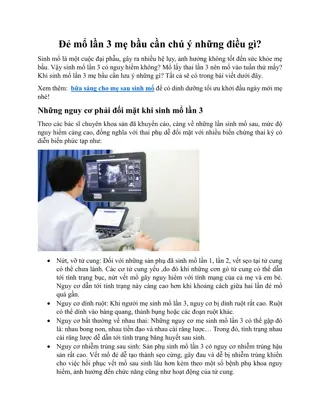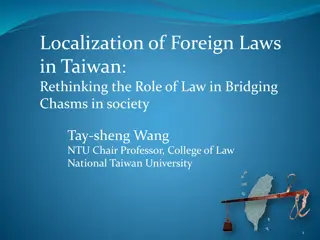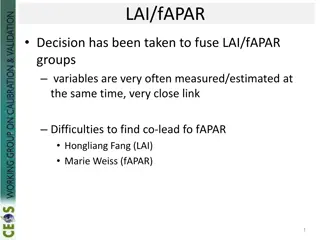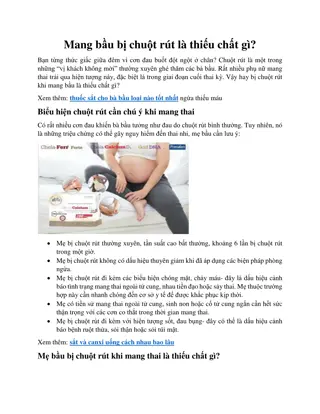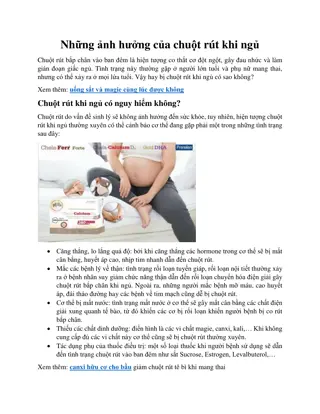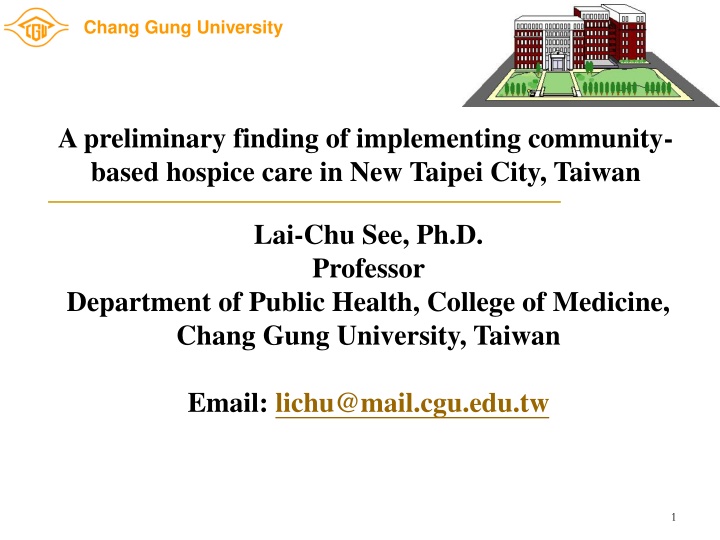
Implementing Community-Based Hospice Care in New Taipei City, Taiwan
Explore the preliminary findings of implementing community-based hospice care in New Taipei City, Taiwan, as researched by Professor Lai-Chu See from Chang Gung University. Learn about the concept of hospice care focusing on providing peace, comfort, and dignity to individuals in their end-of-life stage. Discover the interdisciplinary team involved, services offered, and settings available for hospice care. Delve into the history of hospice care in Taiwan and the initiation of community-based hospice programs by the New Taipei City Government.
Uploaded on | 0 Views
Download Presentation

Please find below an Image/Link to download the presentation.
The content on the website is provided AS IS for your information and personal use only. It may not be sold, licensed, or shared on other websites without obtaining consent from the author. If you encounter any issues during the download, it is possible that the publisher has removed the file from their server.
You are allowed to download the files provided on this website for personal or commercial use, subject to the condition that they are used lawfully. All files are the property of their respective owners.
The content on the website is provided AS IS for your information and personal use only. It may not be sold, licensed, or shared on other websites without obtaining consent from the author.
E N D
Presentation Transcript
Chang Gung University A preliminary finding of implementing community- based hospice care in New Taipei City, Taiwan Lai-Chu See, Ph.D. Professor Department of Public Health, College of Medicine, Chang Gung University, Taiwan Email: lichu@mail.cgu.edu.tw 1
Introduction _1 1. Good death (Weisman) Awareness of the death, Accepting it peacefully, Arranging one s will properly, Timing the death appropriately. Chang Gung University 2
Introduction _2 2. Hospice care end-of-life care, help people who are dying have peace, comfort, and dignity. focuses on caring, not curing. focuses on the quality of life instead of prolong life. Chang Gung University 3
Introduction _3 3. Interdisciplinary team The patient' s personal physician, Hospice physician (or medical director), Nurses, Home health aides, Social workers, Clergy or other counselors, Trained volunteers and speech, physical, and occupational therapists, if needed. Chang Gung University 4
Introduction _4 4. Services Manages the patient s pain and symptoms; Assists the patient with the emotional and psychosocial and spiritual aspects of dying; Provides needed drugs, medical supplies, and equipment; Coaches the family on how to care for the patient; Delivers special services like speech and physical therapy when needed; Chang Gung University 5
Introduction _4 4. Services Makes short-term inpatient care available when pain or symptoms become too difficult to manage at home, or the caregiver needs respite time; and Provides bereavement care and counseling to surviving family and friends. Chang Gung University 6
Introduction _5 5. Setting in the patient's home, in freestanding hospice centers, hospitals, nursing homes, and other long-term care facilities. Chang Gung University 7
Introduction _6 6. Taiwan In 1990, first hospital with hospice wards was Mackay Memorial Hospital. July 1, 2013, New Taipei City Government first initiated community-based hospice program. Jan. 1, 2014, National Health Insurance (10 categories of terminally illness) Chang Gung University 8
Introduction _6 Chang Gung University 9
Introduction _6 Chang Gung University 10
Introduction _7 Chang Gung University 11
Introduction _7 6.1 New Taipei City Government, Taiwan link to 7 hospitals to provide the service. patient is expected to live 3 months or less, he/she stay either at home or at a nursing home, or at an institute. hospice staff make regular visits to assess the patient and provide additional care or other services 3-4 times a month. The patient only pays the travel expense, the fee of medicine and medical device not covered by National Health Insurance. Chang Gung University 12
Aims Find out the use, satisfaction, score of good death, physical and spiritual change at last month before death. Chang Gung University 13
Material & Methods_1 1. Study design Secondary data analysis. Patients were those who received community-based hospice care at New Taipei City Government from July 2013 till May 2014. We had obtained approval from IRB of CGMH. Chang Gung University 14
Material & Methods_2 2. Variables (1) demographic, disease, caregiver (Table 1) (2) information source and sign relevant document (Table 2) (3) physical, psychologicial , spiritual change a month before death (score from 0-4) (Figure 1-3) (4) preparation of good death (Table 3) (5) scores of good death (score from 0-3) (Table 3) (6) satisfaction of the program (0-5) (Table 5) Chang Gung University 15
Material & Methods_3 3. Statistical analysis Descriptive statistics and paired t-test Chang Gung University 16
Results_1 Table 1a. Demographic characteristics Sex n (%) 26(65.0%) 14(35.0%) 4(10.0%) 3(7.5%) 6(15.0%) 13(32.5%) 14(35.0%) 75.5 18.8 n (%) 8(20.0%) 12(30.0%) 2(5.0%) 3(7.5%) 4(10.0%) 11(27.5%) n (%) Education none elementary Junior high Senior high College missing Regilion Folk belief 15(37.5%) Buddism Taoism Other missing men women Age (yr) 20-39 40-64 65-74 75-84 85+ mean SD 9(22.5%) 8(20.0%) 2(5.0%) 6(15.0%) Chang Gung University 17
Results_2 Table 1b. Disease characteristics Main illness n (%) n (%) n (%) Patient aware of the illness no yes missing Patient aware of the severity of the illness no yes missing Cancer lung liver Other missing 29(72.5%) 11(27.5%) 4(10.0%) 8(20.0%) 3(5.0%) 23(57.5%) 11(27.5%) 6(15.0%) 24(60.0%) 10(25.0%) 6(15.0%) Chang Gung University 18
Results_3 Table 1c. Caregiver characteristics Primary care giver (MC) sons daugthers spouse Sons/daughters-in-law mother missing n (%) n (%) n (%) Hired caregiver no yes missing Duration from hospice to death (days) <10 11-20 21+ max min mean SD missing 20(50.0%) 7(17.5%) 5(12.5%) 4(10.0%) 4(10.0%) 2(5.0%) 15(37.5%) 10(25.0%) 15(37.5%) 15(37.5%) 4(10.0%) 12(30.0%) 170 0 37.2 50.2 9(22.5%) Chang Gung University 19
Results_4 Table 2. Information source and sign relevant documents (n=40) Information source (MC) hospital Nursing home Government News paper missing sign document do not resuscitate (DNR) , not use life-sustaining device yes missing sign document inform consent of community-based hospice palliative care program by New Taipei City Government yes missing n(%) 19(47.5%) 1(2.5%) 1(2.5%) 1(2.5%) 18(45.0%) 25(62.5%) 15(37.5%) 34(85.0%) 6(15.0%) Chang Gung University 20
Results_5 Fig. 1. Awareness of the illness and communication Chang Gung University 21
Results_6 Fig. 2. Change of patient s symptom Chang Gung University 22
Results_7 Fig. 3. Change of psychological and spiritual status Chang Gung University 23
Results_8 Table 3a. Preparation of good death (n=22) n(%) Body (Teach family) assess patient s status of near death care patient s cadaver use paper diaper underneath patient s hip to hold urine and faeces Use hot towel to clean patient s cadaver if patient s eyes not close, put tape on patient s eyes, and remove it after rigor mortis if patient s mouth not close, use bandage, gauze, and towel Change clean clothes Psychological (to the family member) Communicate with the patient Accompany the patient at the time of death Assist communication between the patient and the family Comfort the sad family member (young children, old parents, and spouse) Listen the last words of the patient Assist accomplishment of patient s desires 20(90.9%) 18(81.8%) 19(86.4%) 17(77.3%) 20(90.9%) 20(90.9%) 18(81.8%) 15(68.2%) 21(95.5%) 21(95.5%) 14(63.6%) 16(72.7%) 19(86.4%) Chang Gung University 24
Results_9 Table 3b. Preparation of good death (n=22) n(%) Spiritual Help family member to prepare the death according to patient s religion Help the patient to manage the mental uncomfort (eg. conflict, gratitude and resentment) Help the patient to believe in the existence of a world for the death Funeral (help family members) Obtain the death document Contact funeral home Obtain the document of tomb Prepare patient for cremation or interment 22(100.0%) 14(63.6%) 15(68.2%) 21(95.5%) 22(100.0%) 19(86.4%) 21(95.5%) Chang Gung University 25
Results_10 Table 4. Scores of good death at receiving community-based hospice care and at death Receive hospice mean SD death mean SD difference mean SD p (1) aware the imminent death (Awareness) (n=23) (2) accept the illness calmly (Acceptance) (n=23) (3) Arrange things before death (Propriety) (n=24) (4) engage in the death preparation (Timeliness) (n=24) (5) control of the symptom or pain (Comfort) (n=26) 1.8 0.9 Total (n=26) 1 paired t test was made to compare the score at death and when receiving community-based hospice palliative care program 0.04691 1.5 1.0 1.9 1.1 0.4 0.9 0.02901 2.0 0.8 2.4 0.5 0.3 0.7 0.18551 2.3 1.1 2.4 1.0 0.1 0.5 0.22811 1.8 1.1 2.0 1.0 0.3 1.0 0.29461 0.05501 2.0 0.9 0.3 1.3 8.8 3.4 9.8 3.9 1.0 2.6 2 score between 0 and 3, the higher score represent positive feeling Chang Gung University 26
Results_11 Table 5a. Satisfaction of good death program (n=26) Very bad 0(0%) 0(0%) bad fair good excellent mean SD 4.0 0.8 4.1 0.8 care Symptom control satisfaction autonomy Respect the patient s autonom Respect the patient s will of being look after composure Relieve the patient s anxiety Relieve the patient s depression communication Support the patient by words Support the patient by other activities 1 score between 0 and 5, the total score is 60. The higher score represent the better satisfaction 1(3.9%) 4(15.4%) 14(53.9%) 1(3.9%) 4(15.4%) 12(46.2%) 7(26.9%) 9(34.6%) 0(0%) 0(0%) 0(0%) 8(30.8%) 18(69.2%) 4.7 0.5 0(0%) 0(0%) 0(0%) 9(34.6%) 17(65.4%) 4.7 0.5 0(0%) 1(3.9%) 3(11.5%) 15(57.7%) 7(26.9%) 4.1 0.7 0(0%) 0(0%) 4(15.4%) 18(69.2%) 4(15.4%) 4.0 0.6 0(0%) 0(0%) 1(3.9%) 3(11.5%) 22(84.6%) 4.8 0.5 0(0%) 0(0%) 1(3.9%) 2(7.7%) 23(88.5%) 4.9 0.5 Chang Gung University 27
Results_12 Table 5b. Satisfaction of good death program (n=26) Very bad bad fair good excellent mean SD continuity Patient keep contact with relatives or friends Patient feel no regret closure Patient had fulfill his/her wise Comfort the family members Total 1 score between 0 and 5, the total score is 60. The higher score represent the better satisfaction 0(0%) 0(0%) 1(3.9%) 3(11.5%) 22(84.6%) 4.8 0.5 0(0%) 0(0%) 1(3.9%) 5(19.2%) 20(76.9%) 4.7 0.5 0(0%) 0(0%) 2(7.7%) 7(26.9%) 17(65.4%) 4.6 0.6 0(0%) 0(0%) 0(0%) 10(38.5%) 16(61.5%) 4.6 0.5 54.0 5.2 Chang Gung University 28
Discussion_1 Cancer were the major illness (72.5%) Most sign NDR and the consent form Pain, constipation, nausea, poor appetite Mental status (depressed, anxiety) is worse near death Good satisfaction of the service Chang Gung University 29
Discussion_2 In New Taipei City, Taiwan, 20,000 terminally ill patient and 92% are qualified for hospice care annually and only 74 (this study) received the service. 47.5% learn the service from the hospital. Different decision between patients and family member, lack of manpower at home, worry, wrong perception (giving up on life or lower level of medical care) Chang Gung University 30
Discussion_3 Timing of the service: 3 (died on the same date, one or two day after receiving hospice care). Duration (mean=37.2 days, 0-170 day) > hospitals. Chang Gung University 31
Discussion_4 Limitation (1) sample size too small (2) only quantitative information Chang Gung University 32
Chang Gung University Thank you for your attention 33



